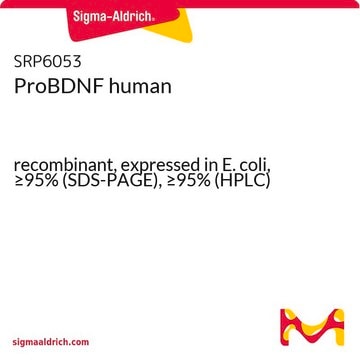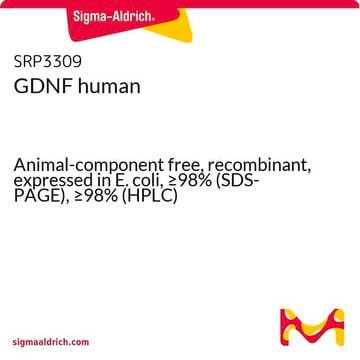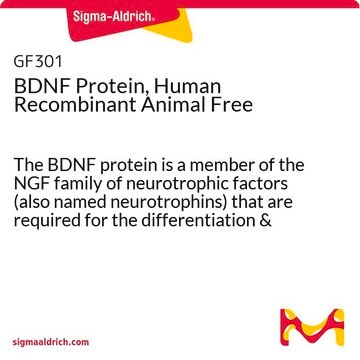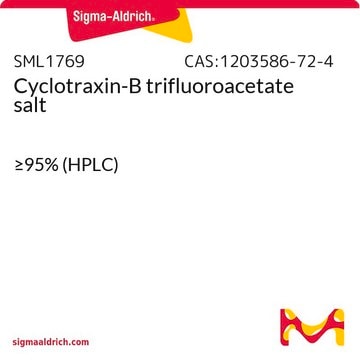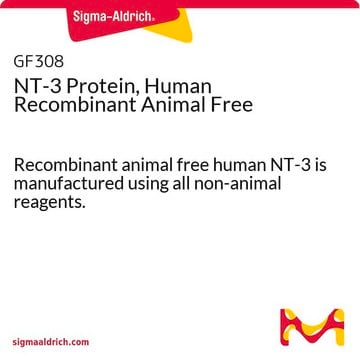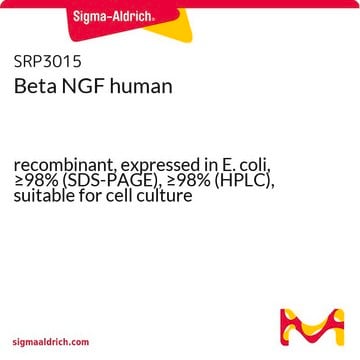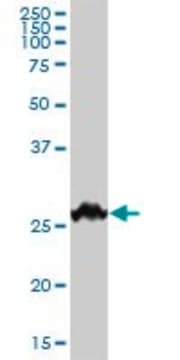B3795
Brain-derived neurotrophic factor human
BDNF, recombinant, expressed in E. coli, lyophilized powder, suitable for cell culture
Synonyme(s) :
Abrineurin, BDNF
About This Item
Produits recommandés
Source biologique
human
Niveau de qualité
Produit recombinant
expressed in E. coli
Pureté
≥95% (SDS-PAGE)
Forme
lyophilized powder
Qualité
endotoxin tested
Poids mol.
~27 kDa
Conditionnement
pkg of 10 μg
pkg of 5 μg
Conditions de stockage
avoid repeated freeze/thaw cycles (Do not store in a frost-free freezer.)
Technique(s)
cell culture | mammalian: suitable
Impuretés
≤1.00 EU/μg Endotoxin level
Numéro d'accès UniProt
Température de stockage
−20°C
Catégories apparentées
Description générale
The active form of BDNF recombinant human protein (27 kDa) is a dimer formed by two identical 119 amino acid subunits held together by strong hydrophobic interactions
Application
Actions biochimiques/physiologiques
Forme physique
Remarque sur l'analyse
Code de la classe de stockage
11 - Combustible Solids
Classe de danger pour l'eau (WGK)
WGK 3
Point d'éclair (°F)
Not applicable
Point d'éclair (°C)
Not applicable
Équipement de protection individuelle
Eyeshields, Gloves, type N95 (US)
Certificats d'analyse (COA)
Recherchez un Certificats d'analyse (COA) en saisissant le numéro de lot du produit. Les numéros de lot figurent sur l'étiquette du produit après les mots "Lot" ou "Batch".
Déjà en possession de ce produit ?
Retrouvez la documentation relative aux produits que vous avez récemment achetés dans la Bibliothèque de documents.
Les clients ont également consulté
Protocoles
Step-by-step culture protocols for neural stem cell culture including NSC isolation, expansion, differentiation and characterization.
Notre équipe de scientifiques dispose d'une expérience dans tous les secteurs de la recherche, notamment en sciences de la vie, science des matériaux, synthèse chimique, chromatographie, analyse et dans de nombreux autres domaines..
Contacter notre Service technique



